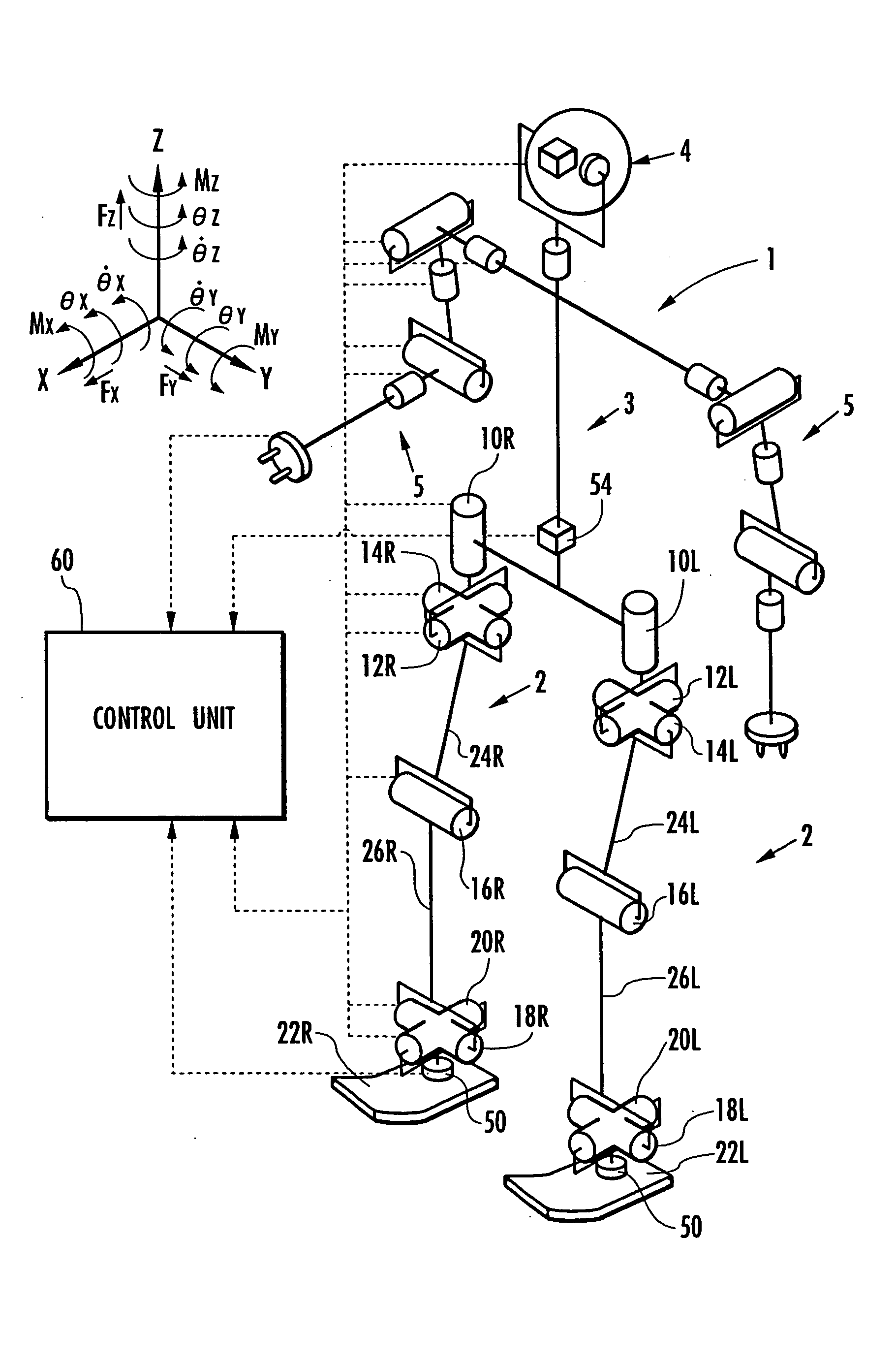Self-position estimating device for leg type movable robots
a robot and self-positioning technology, which is applied in the direction of navigation instruments, manufacturing tools, instruments, etc., can solve the problems of rotational slipping (spin) of the foot, deviation from a desired gait, and the vertical position of the robot tends to deviate from the desired gait, and achieves high precision
- Summary
- Abstract
- Description
- Claims
- Application Information
AI Technical Summary
Benefits of technology
Problems solved by technology
Method used
Image
Examples
first embodiment
[0173] In the above description, the difference between the estimated body posture at the time when landing is ensured and the body posture of the desired gait is calculated as the posture rotational deviation's variation in step S2004. Strictly, however, it is preferable that the difference between the variation of the estimated body posture and the variation of the body posture of the desired gait for a period of one step is calculated as the posture rotational deviation's variation. However, in the first embodiment, since the algorithm described later is performed, the estimated body posture agrees with the body posture of the desired gait by itself at the start of one step. Therefore, the difference between the estimated body posture and the body posture of the desired gait equals to the difference between the variation of the estimated body posture and the variation of the body posture of the desired gait for a period of one step, and thus, either of them may be used.
[0174] The...
second embodiment
[0187] Also in the following, as for the second embodiment, the current estimated supporting leg coordinate system is preferably determined so as to the Z axis aligned with the vertical direction. As for the third and the following embodiments, a similar strategy may be used if the self position deviation due to spinning has to be primarily handled.
[0188] As described above, in the first embodiment, assuming that the actual behavior of the robot 1 is a rotation of the robot 1 and the estimated supporting leg coordinate system, the estimated supporting leg coordinate system being a local coordinate system that describes the movement of the robot 1, and the robot 1 moving following the desired gait in the estimated supporting leg coordinate system, about a predetermined posture rotation center determined by the posture rotation center determining means (in the processing in step S2006) by the posture rotational deviation's variation, which is a variation, during one step, of the diffe...
third embodiment
[0209]FIG. 14 is a flowchart showing a self-position estimating process in step S016 in FIG. 9 according to the
[0210] In the third embodiment, unlike the first and second embodiments, for each control cycle, the posture rotation (or spin) of the estimated supporting leg coordinate system is estimated, so that the estimated supporting leg coordinate system is updated. In addition, the body posture is estimated at instants during each control cycle, and the body position (strictly, the position of the representative point of the body) is estimated at instants during each control cycle.
[0211] Specifically, first, in step S2200, an estimated body posture is determined, as in the first embodiment.
[0212] Then, the process proceeds to step S2202, where the difference between the variation of the estimated body posture seen from the global coordinate system in the control cycle and the variation of the body posture of the desired gait seen from the global coordinate system in the control ...
PUM
 Login to View More
Login to View More Abstract
Description
Claims
Application Information
 Login to View More
Login to View More - R&D
- Intellectual Property
- Life Sciences
- Materials
- Tech Scout
- Unparalleled Data Quality
- Higher Quality Content
- 60% Fewer Hallucinations
Browse by: Latest US Patents, China's latest patents, Technical Efficacy Thesaurus, Application Domain, Technology Topic, Popular Technical Reports.
© 2025 PatSnap. All rights reserved.Legal|Privacy policy|Modern Slavery Act Transparency Statement|Sitemap|About US| Contact US: help@patsnap.com



